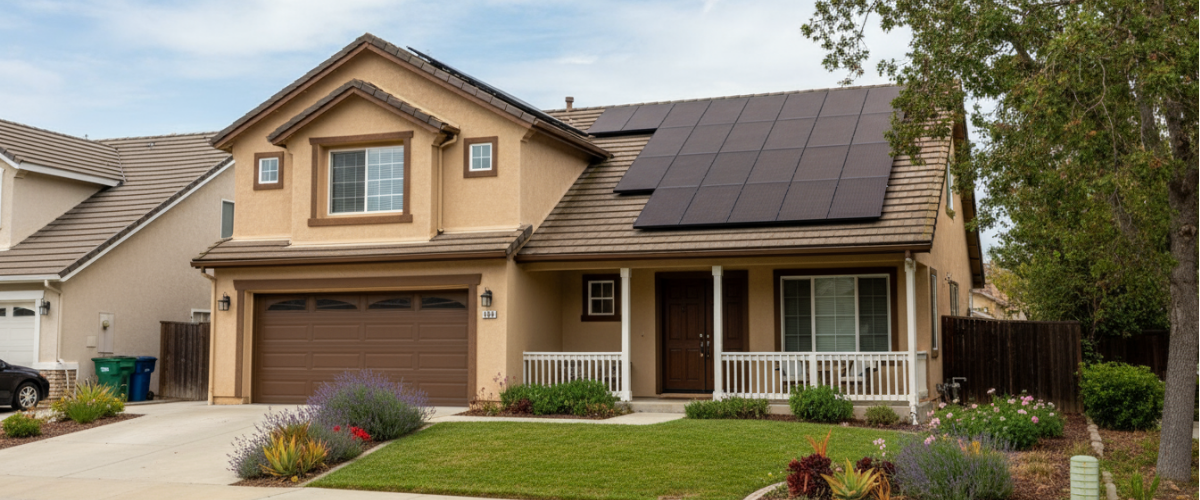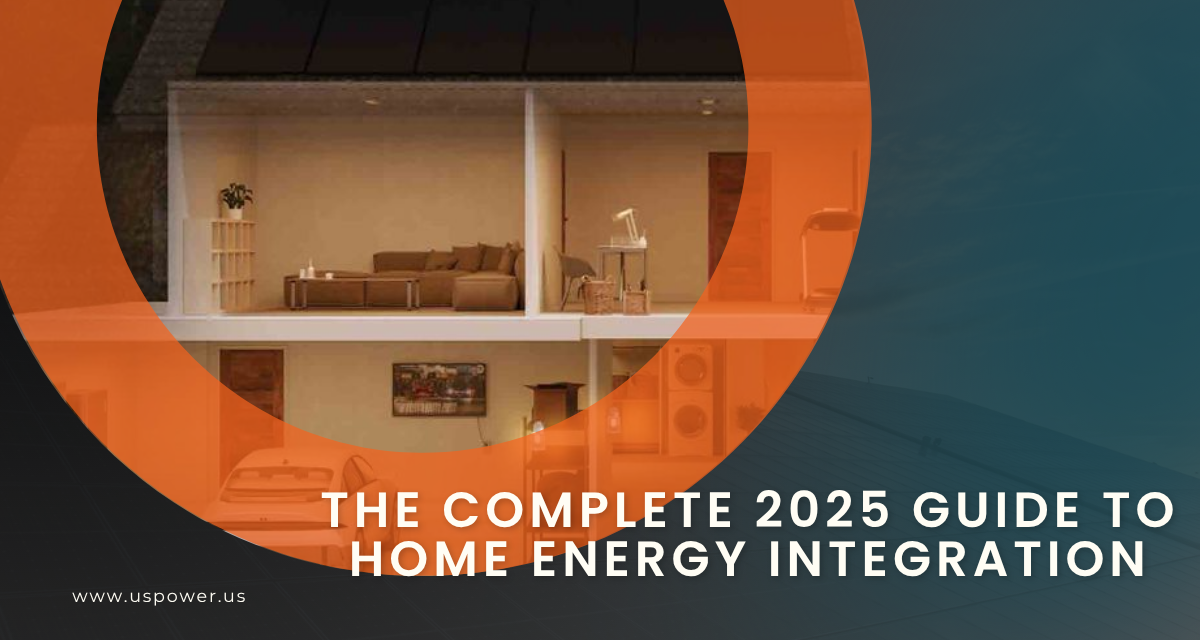The Best Solar Deal for Southern California Homes in 2026

Solar and Roofing Advisor
Beat rising rates in Southern California. Get factory-direct pricing on American-made Qcells through US Power. Lock in 30% credit today.

As 2026 approaches, the solar industry is evolving—but for homeowners across Southern California (including Los Angeles, Ventura, Orange, Riverside and San Bernardino Counties), the outlook remains very strong. With rising electricity rates, shifting incentive structures and new grid policies, the right solar‑plus‑storage solution isn’t just a nice‑to‑have—it’s a strategic investment.
At US Power, homeowners benefit from our exclusive factory‑direct partnership with American‑made Qcells solar panels, combined with top-tier Qcells solar battery system (can also be paired with Tesla, Enphase, and FranklinWH).
Here’s what to know—and why now is the time to act.
The Three Pillars of Solar Value for SoCal Homeowners
When evaluating a solar investment, the value falls into three core categories:
- Energy Savings – reducing your monthly utility costs.
- Property Value Increase – enhancing your home’s resale appeal.
- Incentives & Financing – leveraging credits, rebates and smart purchase/loan structures.
1. Energy Savings
Southern California already has among the highest residential electricity rates in the U.S., which means homeowners who go solar capture meaningful savings. With plenty of sunshine, homes in SoCal can generate significant kilowatt‑hours each year—especially when combined with a high‑efficiency brand like Qcells and a battery system that lets you store daytime solar for evening use.
As rates continue to climb, the “hedge” value of producing your own electricity becomes even stronger.
2. Property Value Increase
Homes equipped with solar systems tend to sell for more and faster than comparable homes without solar. One widely‑cited study found that solar installations in California added approximately 4% to a home’s value under newer tariff structures. What this means in practical terms: a well‑sized solar + battery system tomorrow could translate into a $15,000‑$25,000 uplift for many Southern California homes.
That long‑term gain acts as additional savings besides monthly bill reductions.
3. Incentives & Financing
The incentive landscape is shifting, but remains substantial. At the federal level the Residential Clean Energy Credit (previously the ITC) allows homeowners to deduct 30% of qualifying solar (and storage) system costs for systems placed in service from 2022‑2032.
In California there are also battery storage incentives such as the Self‑Generation Incentive Program (SGIP) which provides rebates for paired solar + storage systems.
At US Power, homeowners get the full benefit of our exclusive Qcells partnership—ensuring strong equipment warranties, factory‑direct national pricing and better compliance with domestic‑content rules, which matter for maximizing credits.
What’s Different in 2026 for Solar in Southern California
Incentive Timing & Policy Shifts
While the 30% federal credit remains, installation timing and “placed in service” rules are increasingly important. Some commentary suggests certain credits may expire or be reduced if systems aren’t energized by key dates.
At the state/utility level, under the Net Energy Metering 3.0 (NEM 3.0) policy, homeowners installing newer systems receive significantly lower compensation for excess solar sent to the grid. One source notes export rates were reduced by roughly 75% compared to earlier policies.
What this means: To maximize savings today in Southern California, pairing solar with battery storage is now especially important—enabling homeowners to use more of their daytime solar production themselves instead of exporting it at low rates.
Rising Utility Rates & Self‑Consumption Value
Because the value of exported solar is reduced under NEM 3.0, SoCal homeowners tilt toward “self‑consumption” models: generate solar, store it, use it during evening or peak hours. Battery systems thus become part of the value proposition—not just optional add‑ons but often advisable. At US Power we design systems around this reality.
Additionally, with utility rates escalating, the opportunity cost of NOT going solar gets larger every year.
Stronger Property Value Premiums
As solar + storage become more mainstream, homes with fully integrated systems stand out. For homes across Southern California—a market where energy efficiency, green credentials, and resilience matter—the future resale value for solar‑equipped homes is increasingly attractive.
Why US Power Is the Installer of Choice Across SoCal
Exclusive Qcells Factory‑Direct Partnership
US Power works directly with Qcells to deliver American‑made solar panels at factory‑direct pricing. This means you get high‑efficiency modules, superior warranty support and the pricing advantages of our strategic relationship.
End‑to‑End Solar + Storage Solutions
Whether you select Tesla Powerwall, Enphase IQ Battery, FranklinWH or Qcells storage, US Power integrates and configures your system for optimum performance in SoCal conditions.
Local Southern California Expertise
We serve Los Angeles, Ventura, Orange, Riverside and San Bernardino Counties. We understand local utility rate structures (SCE, LADWP, etc.), permitting processes, roof/solar site considerations, and SoCal climate/sun patterns.
Performance‑Driven Design
From shading analysis to load‑profile matching to smart energy storage sizing, US Power focuses on making your system pay off—not just producing power, but delivering value.
Transparent Pricing & financing
Thanks to our partnership and local scale, we provide clear cost/savings projections, support for tax credits and ultimately help you maximize return on your investment.
Action Plan for Southern California Homeowners in 2026
- Schedule your free solar + storage assessment with US Power today—get site‑specific data on your roof, sun exposure, current utility rate plan and system size.
- Lock in high‑efficiency Qcells panels now to benefit from factory‑direct pricing and maximize equipment value.
- Integrate battery storage (preferably from Tesla, Enphase, FranklinWH or Qcells) to protect against NEM 3.0 export reductions and rising utility rates.
- Choose the right financing structure—either an outright purchase or a loan—so you capture the full federal credit (30%) and state/local rebates.
- Install and commission your system promptly—timing matters for incentives and to capture as much savings as possible.
- Monitor system performance and power usage—US Power provides monitoring dashboards so you can track lifetime savings and ensure proper operation.
US Power Helps You Kickstart 2026 with Solar Savings
For Southern California homeowners, 2026 isn’t a year to call solar “done”—it’s a year to call solar smart. With rising utility costs, evolving policies like NEM 3.0, and strong long‑term property value upside, installing a solar + storage system now through US Power puts your home ahead of the curve.
Don’t wait for incentives to shrink or utility costs to soar further. Lock in your energy savings, boost your home’s value and take control of your power.
Ready to get started? Claim your free consultation and take the first step toward a brighter, more independent energy future.
Artículos relacionados
Nuestros blogs relacionados
Claim big solar savings before the tax credit drops—lock in your 30% rebate today!
CA solar buyers, consider locking in US-made panels before import duty changes.
Southern California’s guide to solar-powered EV home charging from QCells + US Power.
Nuestros socios de marcas de energía solar y techos








Empoderamos a las comunidades y las empresas para que aprovechen las energías limpias y renovables energía solar soluciones que impulsan el crecimiento sostenible.
Derechos de autor © 2025 US POWER | Energía solar y techosUS Power - Axia by QCells. All Rights Reserved.
La privacidad es importante para nosotros, por lo que tiene la opción de deshabilitar ciertos tipos de almacenamiento que pueden no ser necesarios para el funcionamiento básico del sitio web. El bloqueo de categorías puede afectar a su experiencia en el sitio web.
Imprescindible
Estos elementos son necesarios para habilitar la funcionalidad básica del sitio web.
Personalización
Estos elementos permiten que el sitio web recuerde las elecciones que ha realizado (como el nombre de usuario, el idioma o la región en la que se encuentra) y proporcionan funciones mejoradas y más personales.
Mercadeo
Estos artículos se utilizan para ofrecer publicidad que sea más relevante para usted y sus intereses.
Analítica
Estos elementos ayudan al operador del sitio web a comprender cómo funciona su sitio web, cómo interactúan los visitantes con el sitio y si puede haber problemas técnicos.
Nosotros y nuestros socios externos utilizamos cookies y otras tecnologías para mejorar y rastrear su experiencia en este sitio, realizar análisis y personalizar el marketing para usted. Al usar el sitio, aceptas que usemos estas tecnologías, incluido el registro y el monitoreo de tus interacciones con el sitio.
¡Obtenga una estimación solar instantánea usando el satélite!










